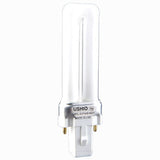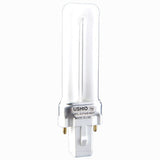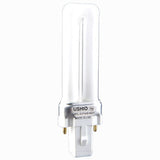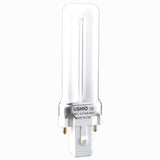Three Alternatives to Banned Light Bulbs - Halogen, CFL, LED
Posted by Nick on for ProLampSales
With the phase-out of the 60 watt incandescent light bulb, finding these classic bulbs will get more and more difficult over time. Even now, just a few months after the ban came into effect in January 2014, home improvement stores are doing everything they can to shift consumers into alternative, more energy-efficient light sources.
The big box stores are pushing LED bulbs, and hard. The reason? LED is getting all the media hype and is finally (almost) ready to take over the residential market. It is also the future of lighting so the stores are getting in early and finding customers for the higher priced LED bulbs. Consumer lighting wasn't a huge factor for home improvement stores when most people grabbed a $0.60 bulb and went on their way. But with $10-$20 per LED bulb, suddenly lighting has gained greater focus.
But are LEDs the only way to go? Looking down any aisle at a home improvement store, and it sure seems like it. Savvy consumers, however, are taking a closer look at what's on the shelves and what is available online, in addition to the popular-yet-relatively-expensive LEDs. Here are three types of bulbs to consider if you can't get your favorite incandescent anymore.
Halogen
Halogen A-type light bulbs technically are incandescent bulbs. Halogen gas surrounds the filament in these bulbs, allowing them to burn as brightly as an incandescent but using slightly less energy.
Halogen bulbs can be dimmed, look like standard light bulbs, and start instantly. They are also the cheapest alternative to the old A-shape light bulb, costing less than $3 per bulb for frosted versions, and even less for a clear bulb.
However, you might want to consider stocking up on halogen bulbs while you can. Once the incandescent bulbs are gone, halogen should be next in line for a ban, as they are only slightly more efficient than incandescent.
Compact Fluorescent
CFLs, the much-maligned bulb, are more efficient than incandescent or halogen, with a significantly longer life, and only a slightly higher cost. So why have consumers largely taken a pass on them?
Some quality issues dogged these bulbs when they were originally developed. Technical inconsistency was one problem, while weird color of the light was another. Thankfully, the vast majority of CFLs manufactured these days give off light comparable to incandescent bulbs, and are reliable.
With that said, CFLs are an excellent option, balancing energy efficiency and cost. The amount of mercury in the bulbs has gone down as technology has advanced, and there are even dimmable compact fluorescent bulbs widely available these days. While not as cheap as halogens, they will last longer and use significantly less energy.
LED
Once you realize that the life of one LED bulb is the same as 25 incandescent bulbs, the initial higher cost of the LED can seem a much better investment, especially if you factor in the energy savings over the life of the bulb.
LEDs work just like incandescent: instant on, dimming (on most models with a compatible dimmer), work great in low temperatures, and give the same great warm soft light. Dimming is an advantage LEDs have over CFLs, as dimmable CFL bulbs will be more expensive than a non-dimmable version.
LEDs also provide more flexibility for consumers, who can choose between various form factors, color temperature options, and color rendering options. LEDs are also the only bulbs that have been converted to being "smart," controllable by a phone app.
LED lights also contain no mercury and emit no ultraviolet light and very little infrared. This makes them safer than other lighting technologies, and much more efficient with less energy lost through heat. However, it should be noted that heat management is important for LEDs, as high temperatures can severely compromise life.
Finally, for integrated LED light fixtures, it may be wise to check if the LED array is replaceable. Unfortunately, it most likely won't be. Most integrated fixtures are designed to be disposed of if the LED array fails, with few replacement parts available. In addition, LED technology is advancing too quickly for manufacturers to offer replacement LED arrays that may be two or more generations behind.
- Posted in Fluorescent, Halogen, Incandescent, LED
Featured Products (View All)
0 Comments




